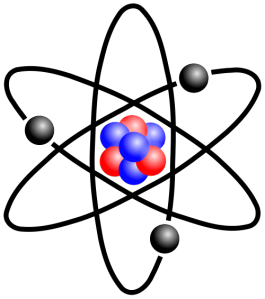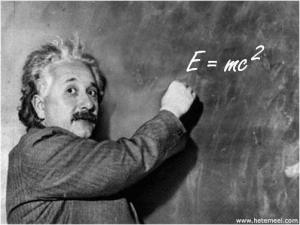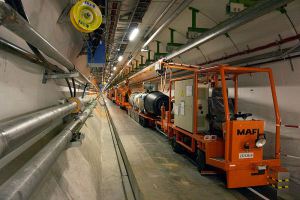News agencies have been buzzing with reports that the discovery of the fabled ‘God particle’ is close at hand. But who really knows what this enigmatic thing actually is? What difference is it really going to have to Joe-public? Research shows that despite the lab-coat wearer’s best efforts most people just don’t ‘get’ science.
So here is an attempt to redress the balance (albeit in a tiny way). This is a delightfully simple 4 minute guide to everything you need to know about the Large Hadron Collider, the Higgs boson, the ‘God particle’ and particle physics. I’m no particle physicist, so hopefully it will be easy to understand - and shouldn’t get you feeling too nauseous…
Particle Physics Explained in 90 Seconds
Lot’s of people have tried to make modern physics understandable. If you’ve tried reading Stephen Hawking’s ‘A Brief History of Time‘, then you’ll appreciate that few scientists have actually achieved it (surely I wasn’t the only one who got stuck on Chapter 5?).
The thing is, the world according to physics is extremely complicated. When I was at school, we were taught that everything was made from atoms - which were a bit like little round billiard balls. In the middle of each atom was a nucleus around which electrons whizzed around just like planets orbiting around the sun.
Scientists have known for about a century that this was all a bit too simple. Electrons are very weird little creatures that can be everywhere and nowhere at the same time. And the parts of the nucleus could be broken down into even tinier bits called quarks (and you thought that was a cheese)!
Einstein threw another spanner in the works when he declared:
His stylish-looking equation basically means you can turn physical stuff (mass, or m) into energy (e). And likewise, he stated that energy (e) can also be turned back into matter (mass, or m). The implications of his discovery were so mind-bendingly odd, that a semi-political movement formed in its wake (the ‘Anti-Relativists‘). Headed up by Ernst Gehrcke, these Einstein-deniers believed that science shouldn’t be so complicated that it couldn’t be understood by the common man.
So, if you find particle physics confusing… console yourself that lots of scientists do too.
What is the ‘God Particle’? Explained in under one minute!
It all started with a Big Bang. At the beginning of the everything, there was an almighty explosion. Energy erupted out of nothingness and brought space and time into existence. In the first milliseconds of our reality, everything was energy (it was probably a very hot and bright place to be). But within moments, some of this burning hot energy started to turn into matter - heat and light turned into the atoms that would go on to form stars, planets and (ultimately) us.
Quite how or why this happened, no one is quite sure. But in the 1960’s some uber-clever scientists thought they might have the answer. Amongst them, Peter Higgs, theorised that the thing that made energy turn into mass was a tiny particle - now called The Higgs Boson.
Later, the Higgs Boson was given it’s cooler and more media-friendly moniker ‘The God Particle‘. This fundamental sub-atomic fleck is believed to be part of all atoms and is the thing that gives you, I, and the computer you are looking at a physical presence in the world - without it, all of our atoms would turn into energy and you’d float off up the chimney.
The Search for the God Particle (explained in 30 seconds)
The Higgs boson is a shy old thing. It is so intrinsically attached to atoms that no one has been able to actually ‘see’ it yet. The only way to discover whether it really exists is by bashing stuff together (very hard). The Large Hadron Collider (LHC) is a huge 27 km circular underground tunnel under the Alps that does just this and is leading the hunt for the God Particle.
A bit like a child smashing two stones together, the LHC is behemoth of a subterranean structure devoted to crashing tiny bits of matter into each other. Atomic particles speed around this ‘particle accelerator‘ like two athletes on a Velodrome cycling in opposite directions. When these speeding particles collide - BANG! - a firework display of atomic shrapnel momentarily flashes into view. Using special sensors, physicists hope that by getting the collision just right, they can catch a glimpse of the Higgs Boson.
So What if the God Particle is Discovered?
Smug-looking physicists will definitely be popping champagne corks if and when the ‘God Particle’ is discovered (UPDATE 4th July 2012 - which seems to be about now!) For them, such a discovery would help answer the fundamental question of ‘what makes the difference between mass and energy?’ It provides scientists with a neat conclusion to what is called ‘The Standard Model‘ - an overall theory for how mass, energy and force work. But will discovering the ‘God particle’ have any practical applications to the likes of you and I?
Probably not - at least not in the short term. But as with all scientific breakthroughs, no-one knows where it could lead - had you realised that Wi-Fi technology emerged from a hunt for black holes?
Some people think that the discovery of the God Particle may one day allow us to travel at speeds faster than the speed of light. By learning more about the relationship between mass and energy - who knows - maybe teleporting might be possible in the future? I may be no physics expert, but these are ideas that I could get very excited about.
UPDATE: Following comments below - thanks Claire (and having read this book), a technical clarification is warranted to help improve the accuracy of this article (although it makes it a little more complicated). Claire is quite right when she says that mass is given to objects when they pass through what is called the ‘Higgs Field’. Although it’s impossible to imagine, it is probably best thought of as a three dimensional, invisible grid that is everywhere. This ‘field’ is what gives anything physical a mass. Some things are ‘caught’ in the Higgs field and, like a ball rolling through treacle, get stuck - these are all the sub-atomic particles that have mass (i.e. what makes up everything you can physically touch). Other particles don’t. Light, for example, is made from photons and are unaffected by the Higgs field and pass straight through. Hence light has no mass and zips around at the speed of light. The evidence for the Higgs field actually existing is in the Higgs Boson.
The Higgs Boson can be seaparated from physical subatomic particles during high speed collisions. Although it will only be ‘visible’ for a fraction of time - getting a glimpse of it shows that the ‘Higgs mechanism’ theory really is true.
Thanks for reading - your comments and feedback are warmly welcomed!

.
References:
This article was inspired by the findings of research papers showing a general lack of understanding of science by the general public:
Miller, S. (2001). Public understanding of science at the crossroads Public Understanding of Science, 10 (1), 115-120 DOI: 10.1088/0963-6625/10/1/308
An excellent account of those who opposed Einstein can be read in:
David E Rowe (2006). Einstein’s Allies and Enemies: Debating Relativity in Germany, 1916–1920 Boston Studies in the Philosophy of Science, 251, 231-280 DOI: 10.1007/978-1-4020-5195-1_8
Read more about Stephen Hawking’s ‘A Brief History of Time‘
![1/365 [dazed & confused] by PhotoJonny, on Flickr 1/365 [dazed & confused]](../../../../2011/05/confused2-w-150-h-117.jpg)














Thanks for this. It helped clarify what I thought I knew 🙂
Posted by limey | May 4, 2011, 5:00 pmGreat to hear Limey! Thanks for giving feedback.
😉
Posted by Stuart Farrimond | May 4, 2011, 5:32 pmI hope the LHC does reach full power soon and provide some answers to the seemingly unanswerable (and even insane) questions that quantum science is now confronted with.
I fear the worlds great science projects are all about to be moth-balled for lack of funding. Not only are the European taxpayers running out of capacity, but so are the US taxpayers. ‘Sandia’ is the covert major funder of all these projects and it’s insane budget is under attack from all sides of US politics. It is a tavesty that Sandia and all these great science projects seem doomed by the humble need to fund pensions and welfare.
Posted by Dr. Max Ward | May 5, 2011, 3:32 pmHi Dr Ward,
Well said - I echo your sentiments!
Posted by Stuart Farrimond | May 8, 2011, 5:16 pmThanks,
This is obviously oversimplified, but one can build on it.
Posted by countertopsolutions | July 26, 2011, 4:25 amI thought I had an idea what it was all about and this has confirmed I wasnt too far off! More of the same please!
Posted by michael devereau | December 16, 2011, 10:25 pmThanks Michael! Will do 🙂
Posted by Stuart Farrimond | December 19, 2011, 10:18 amI’m a big fan of your blog, first stumbled into it when researching what my friends charmingly refer to as nose fleas. (Mystery of the itchy nose)
This fundamental sub-atomic fleck is believed to be part of all atoms and is the thing that gives you, I, and the computer you are looking at a physical presence in the world – without it, all of our atoms would turn into energy and you’d float off up the chimney.
I would however make a slight amendment to your comment about what the higgs is… while the higgs boson is not likely to exist for more than a fraction of a second my understanding of the theory was that the field it exhibited after it broke down was what changed particles into massful forms.
I’m certainly no expert and it’s very accessible stuff
Many thanks
Claire
Posted by Claire | January 19, 2012, 1:38 pmHi Claire - thanks for your kind words 🙂
Oddly enough I’m reading a book ‘Higgs Force’ at the moment, which is supposed to explain the Higgs boson to ordinary folk. I’m halfway through… Hopefully I’ll understand it more by the end - and I’ll update the blog post with a more accurate explanation 😉
Posted by Stuart Farrimond | January 19, 2012, 5:47 pm